Your How to work out cumulative frequency table images are ready. How to work out cumulative frequency table are a topic that is being searched for and liked by netizens today. You can Get the How to work out cumulative frequency table files here. Download all free vectors.
If you’re searching for how to work out cumulative frequency table pictures information related to the how to work out cumulative frequency table keyword, you have visit the right site. Our website always gives you hints for refferencing the highest quality video and picture content, please kindly surf and find more enlightening video articles and images that match your interests.
How To Work Out Cumulative Frequency Table. Arrange the obtained data in ascending order. Cumulative Relative Frequency Table. This video helps you to understand how to work out cumulative frequency draw the cumulative frequency graph and find the median lower quartile upper quartile and interquartile range. Cumulative Frequency - YouTube.
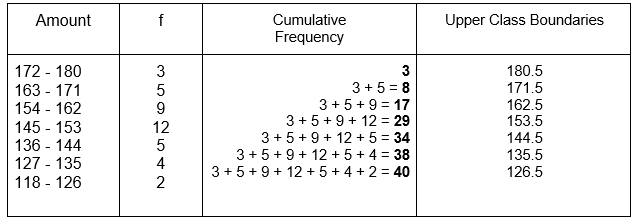 Cumulative Frequency Graphs Gcse Guide From gcseguide.co.uk
Cumulative Frequency Graphs Gcse Guide From gcseguide.co.uk
The table can be easily built by following the steps below. The last value for the cumulative frequency will always be equal to the total number of data values since all frequencies will already have been added to the previous total. In this video you will learn how to create a cumulative frequency tableHere are the steps creating a cumulative frequency tableStep 1 - Determine your inter. Notice that each value in the table has the same frequency. Lets take a look example. First we need to create a frequency table then we need to find the cumulative frequency as well as our cumulative relative frequency percent.
The cumulative frequency is.
This can be represented on a graph by plotting the upper boundary of the groups. Arrange the obtained data in ascending order. Cumulative Relative Frequency Table. Mark Aug 5 2012 The cumulative frequency can be calculated by adding up the frequencies in the frequency table. Start by writing the first frequency cumulative frequency columns and keep adding on the next frequency onto the last cumulative frequency. Notice that each value in the table has the same frequency.
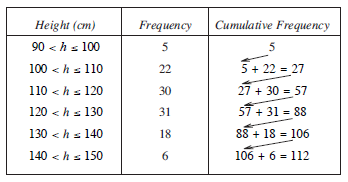 Source: szalonta.hu
Source: szalonta.hu
Dont just watch videos get exam question practice by using free Past-Paper Compilations with Detailed Solutions which you. Dont just watch videos get exam question practice by using free Past-Paper Compilations with Detailed Solutions which you. Next we draw a graph where the x-axis represents the counts and the y-axis represents the cumulative relative frequency as noted by Statistics Canada. Lets take a look example. The cumulative frequency in the last row is the same as the total sum of frequencies.
 Source: mathematics-monster.com
Source: mathematics-monster.com
A cumulative frequency table is a chart that shows the popularity or mode of a certain type of data and the likelihood that a given event will fall below the frequency. Next we draw a graph where the x-axis represents the counts and the y-axis represents the cumulative relative frequency as noted by Statistics Canada. A cumulative frequency table is a chart that shows the popularity or mode of a certain type of data and the likelihood that a given event. To calculate cumulative frequency start by sorting the list of numbers from smallest to largest. What is the modal weight if the frequency numbers are 3651.
 Source: mathsmadeeasy.co.uk
Source: mathsmadeeasy.co.uk
Dont just watch videos get exam question practice by using free Past-Paper Compilations with Detailed Solutions which you. To calculate cumulative frequency we add the first frequency to the second frequency then add the third frequency to the result and the process continues. Next we draw a graph where the x-axis represents the counts and the y-axis represents the cumulative relative frequency as noted by Statistics Canada. The cumulative frequency is calculated from a frequency table by adding each frequency to the total of the frequencies of all data values before it in the data set. The last value will always be equal to the total for all observations since all frequencies will already have been added to the previous total.
 Source: mathematics-monster.com
Source: mathematics-monster.com
This can be represented on a graph by plotting the upper boundary of the groups. Find the individual frequencies for each distinct value or category. You can see that there is a. The cumulative frequency in the last row is the same as the total sum of frequencies. Try the free Mathway calculator and problem solver below to practice various math topics.
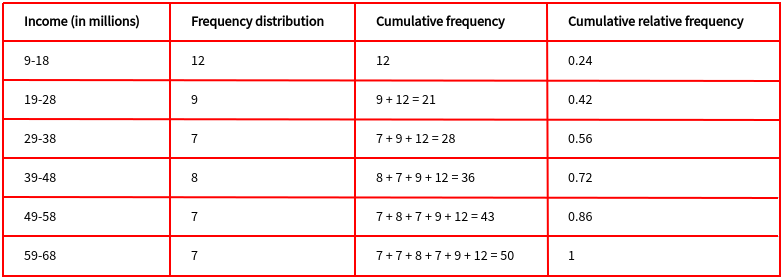 Source: basic-mathematics.com
Source: basic-mathematics.com
The frequency table shows us that there are six children aged 11 seven children aged 12 five children aged 13. The cumulative frequency is. The last value for the cumulative frequency will always be equal to the total number of data values since all frequencies will already have been added to the previous total. In this video you will learn how to create a cumulative frequency tableHere are the steps creating a cumulative frequency tableStep 1 - Determine your inter. Find the individual frequencies for each distinct value or category.
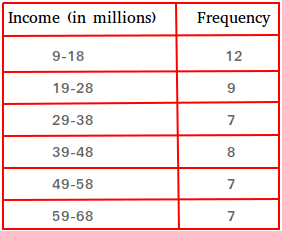 Source: basic-mathematics.com
Source: basic-mathematics.com
To calculate cumulative frequency we add the first frequency to the second frequency then add the third frequency to the result and the process continues. To find the sum of their ages calculate. A cumulative frequency diagram is drawn by plotting the upper class boundary with. This means there is no mode for this particular frequency table since each value occurs the same number of times. The first cumulative frequency is the same as the first frequency as you just add a zero to the frequency.
 Source: szalonta.hu
Source: szalonta.hu
This video helps you to understand how to work out cumulative frequency draw the cumulative frequency graph and find the median lower quartile upper quartile and interquartile range. Try the free Mathway calculator and problem solver below to practice various math topics. Start by writing the first frequency cumulative frequency columns and keep adding on the next frequency onto the last cumulative frequency. First we need to create a frequency table then we need to find the cumulative frequency as well as our cumulative relative frequency percent. In this video you will learn how to create a cumulative frequency tableHere are the steps creating a cumulative frequency tableStep 1 - Determine your inter.
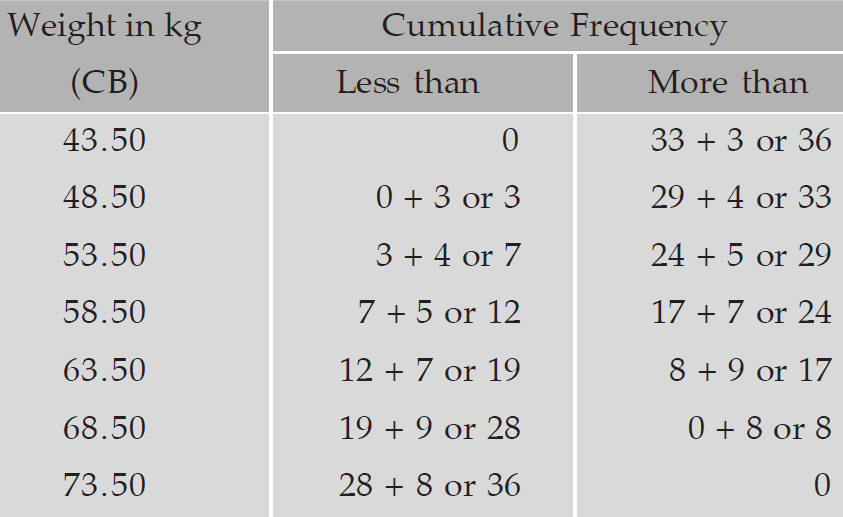 Source: onlinemath4all.com
Source: onlinemath4all.com
Notice that each value in the table has the same frequency. The cumulative frequency is calculated by adding each frequency from a frequency distribution table to the sum of its predecessors. First we need to create a frequency table then we need to find the cumulative frequency as well as our cumulative relative frequency percent. Cumulative Frequency - YouTube. Try the given examples or type in your own problem and check your answer with the.
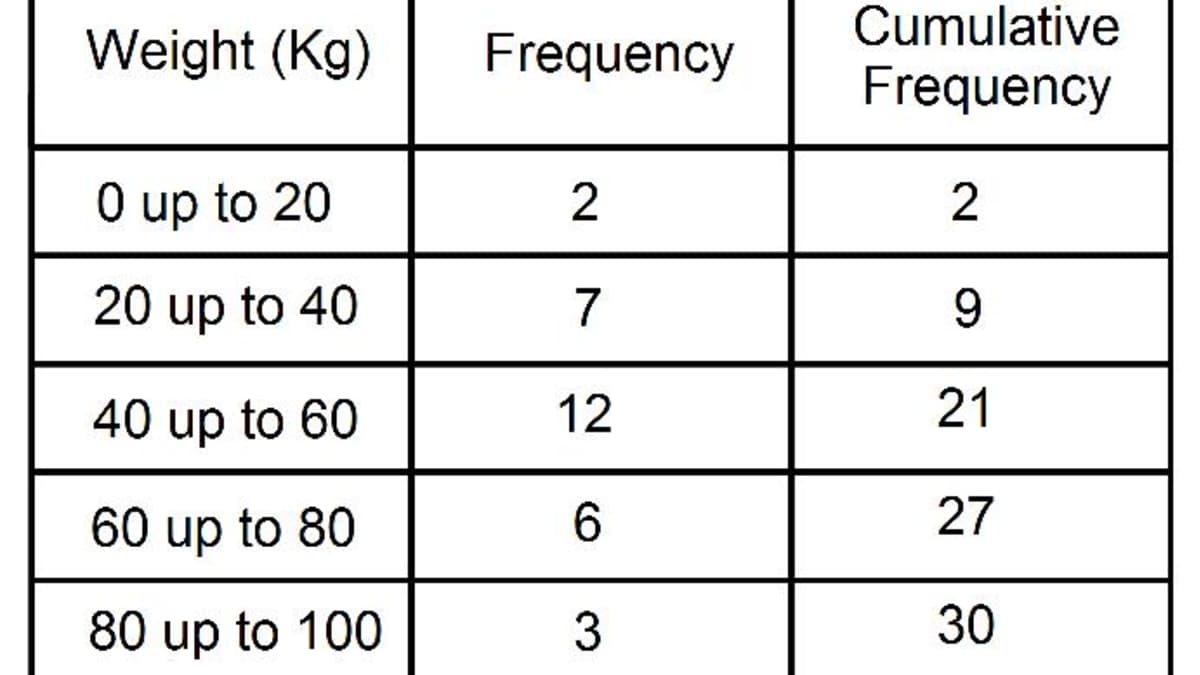 Source: discover.hubpages.com
Source: discover.hubpages.com
Then we plot our points. The cumulative frequency is obtained by adding up the frequencies as you go along to give a running total. Notice that each value in the table has the same frequency. Then we plot our points. This can be represented on a graph by plotting the upper boundary of the groups.
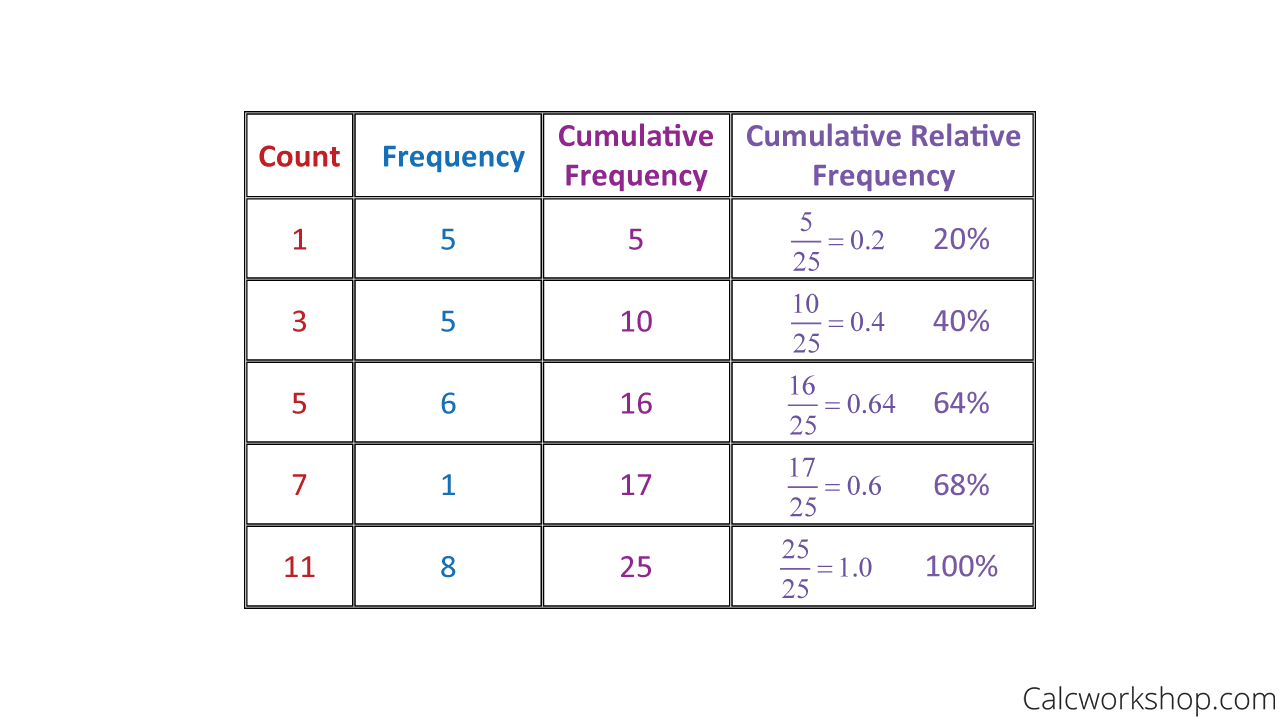 Source: calcworkshop.com
Source: calcworkshop.com
This can be represented on a graph by plotting the upper boundary of the groups. The cumulative frequency is obtained by adding up the frequencies as you go along to give a running total. Cumulative frequency tables. What is the modal weight if the frequency numbers are 3651. Arrange the obtained data in ascending order.
 Source: szalonta.hu
Source: szalonta.hu
The frequency table shows us that there are six children aged 11 seven children aged 12 five children aged 13. This can be represented on a graph by plotting the upper boundary of the groups. To calculate cumulative frequency start by sorting the list of numbers from smallest to largest. The last value will always be equal to the total for all observations since all frequencies will already have been added to the previous total. Find the individual frequencies for each distinct value or category.
 Source: mathlibra.com
Source: mathlibra.com
The cumulative frequency in the last row is the same as the total sum of frequencies. The cumulative frequency in the last row is the same as the total sum of frequencies. Start by writing the first frequency cumulative frequency columns and keep adding on the next frequency onto the last cumulative frequency. To calculate cumulative frequency start by sorting the list of numbers from smallest to largest. Calculate Cumulative Frequency - YouTube.
 Source: mathsmadeeasy.co.uk
Source: mathsmadeeasy.co.uk
To calculate cumulative frequency start by sorting the list of numbers from smallest to largest. A cumulative frequency table is a chart that shows the popularity or mode of a certain type of data and the likelihood that a given event will fall below the frequency. Cumulative frequency tables. The last value for the cumulative frequency will always be equal to the total number of data values since all frequencies will already have been added to the previous total. The cumulative frequency in the last row is the same as the total sum of frequencies.
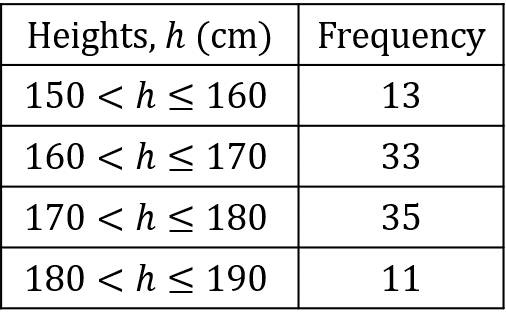 Source: mathsmadeeasy.co.uk
Source: mathsmadeeasy.co.uk
This can be represented on a graph by plotting the upper boundary of the groups. This means there is no mode for this particular frequency table since each value occurs the same number of times. This video helps you to understand how to work out cumulative frequency draw the cumulative frequency graph and find the median lower quartile upper quartile and interquartile range. Notice that each value in the table has the same frequency. The frequency table shows us that there are six children aged 11 seven children aged 12 five children aged 13.
 Source: slideplayer.com
Source: slideplayer.com
Lets take a look example. First we need to create a frequency table then we need to find the cumulative frequency as well as our cumulative relative frequency percent. Mark Aug 5 2012 The cumulative frequency can be calculated by adding up the frequencies in the frequency table. Dont just watch videos get exam question practice by using free Past-Paper Compilations with Detailed Solutions which you. The table can be easily built by following the steps below.
 Source: gcseguide.co.uk
Source: gcseguide.co.uk
To calculate the cumulative frequencies add the frequencies together. Cumulative Frequency - YouTube. Arrange the obtained data in ascending order. This can be represented on a graph by plotting the upper boundary of the groups. The first cumulative frequency is the same as the first frequency as you just add a zero to the frequency.
 Source: mba-lectures.com
Source: mba-lectures.com
What is the modal weight if the frequency numbers are 3651. The frequency table shows us that there are six children aged 11 seven children aged 12 five children aged 13. To calculate cumulative frequency we add the first frequency to the second frequency then add the third frequency to the result and the process continues. Cumulative frequency is a running total of the frequencies. The cumulative frequency is.
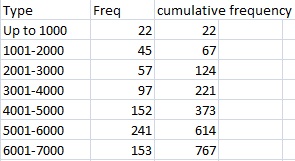 Source: statisticshowto.com
Source: statisticshowto.com
To calculate the cumulative frequencies add the frequencies together. How to work out the the cumulative frequencies from a frequency table. To create a cumulative frequency table all we need to do is add the frequencies together as we progress down the column. What is the modal weight if the frequency numbers are 3651. The table can be easily built by following the steps below.
This site is an open community for users to share their favorite wallpapers on the internet, all images or pictures in this website are for personal wallpaper use only, it is stricly prohibited to use this wallpaper for commercial purposes, if you are the author and find this image is shared without your permission, please kindly raise a DMCA report to Us.
If you find this site good, please support us by sharing this posts to your preference social media accounts like Facebook, Instagram and so on or you can also bookmark this blog page with the title how to work out cumulative frequency table by using Ctrl + D for devices a laptop with a Windows operating system or Command + D for laptops with an Apple operating system. If you use a smartphone, you can also use the drawer menu of the browser you are using. Whether it’s a Windows, Mac, iOS or Android operating system, you will still be able to bookmark this website.






